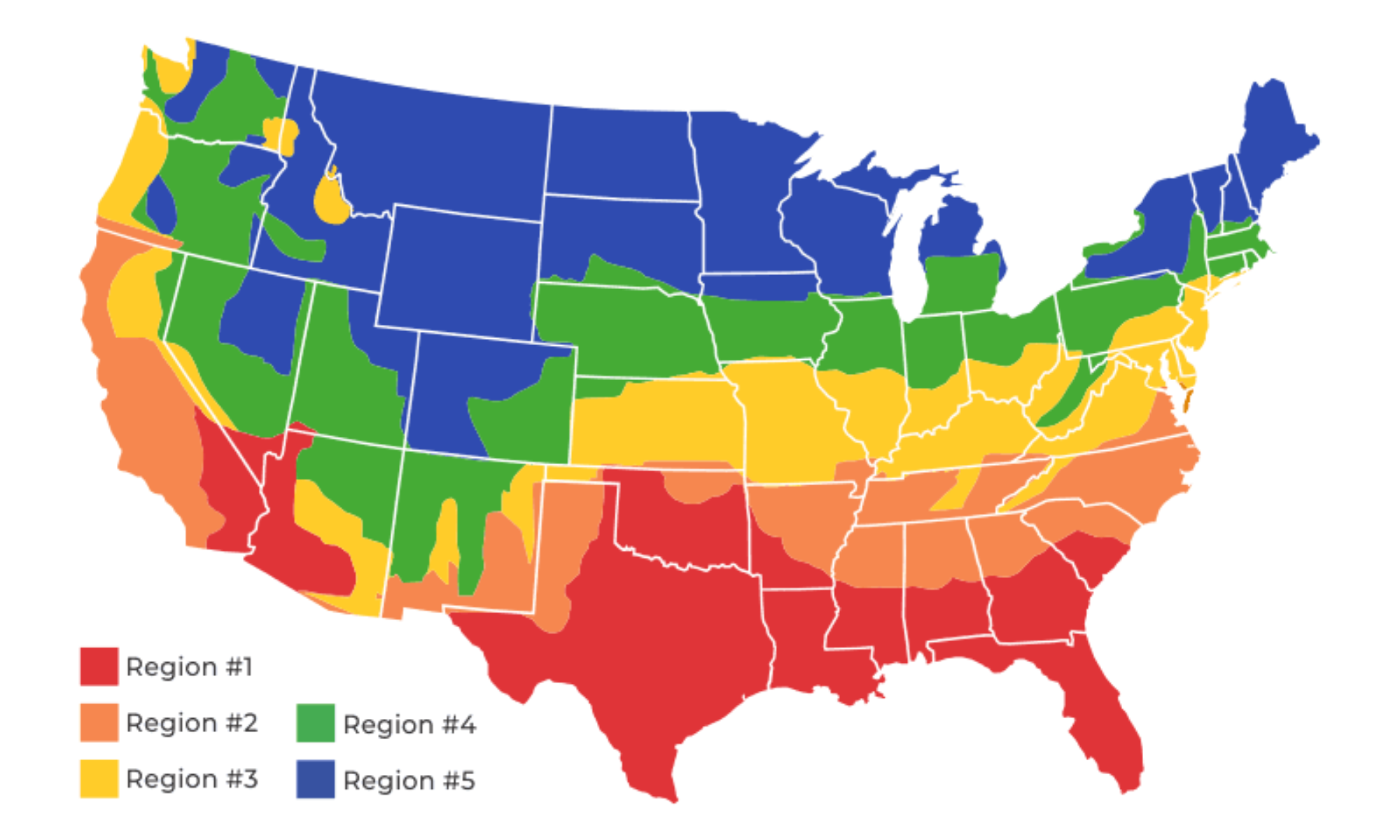HVAC365 Sizing Calculator
Section 1
Select your region
Pick your climate zone
Tip: Use the legend to set your region. It syncs with the dropdown below.
Section 2
Equipment Configuration
Choose what you plan to install. Mini-split adds single/multi-zone options.
Select an equipment type.
Section 4
Property Dimensions
Disclaimer: We recommend you confirm the final selection with a professional. Use results as guidance only.
Energy Efficiency Matters
Actionable guidance to reduce load and operating cost—tailored to your selections.
Weather & Region
Pick your climate zone to calibrate per-ft² loads.
Envelope & Insulation
Upgrade attic insulation and air sealing to reduce runtime 10–20%.
Usage & Controls
Smart thermostats & schedules curb waste during peak hours.
Estimated Cooling Cost
Enter values and click Estimate Cost. We’ll use your calculated cooling BTU.
Maintenance & Care
Simple routines to keep your system efficient, quiet, and reliable all year.
Installation Requirements
Electrical & Location
- Dedicated breaker; correct wire gauge
- Outdoor pad, 12–24" clearance around coil
- Service disconnect within line-of-sight
Refrigerant & Airflow
- Line set sized per OEM; nitrogen purge & deep vacuum
- 350–400 CFM/ton; verify static pressure
- Proper condensate trap and float safety switch
Cold-Climate Notes
- Balance point & auxiliary heat sizing documented
- Defrost control verified; condensate management
- Consider dual-fuel in very cold regions
Electrical & Airflow
- Strip heat breaker sizing; wire gauge per kW
- Airflow for both heating & cooling modes
- Thermostat supports staging & lockouts
Furnace + AC
- Combustion air & venting per code; gas leak test
- Proper furnace orientation & condensate routing
- Match AHRI with outdoor AC for SEER2 compliance
Duct & Controls
- CFM/ton verified; filter sizing for low static
- Thermostat wiring (C wire), stage configuration
- CO safety; heat rise within spec
Single-Zone
- Indoor head sized to room load; line set limits
- Wall bracket/pad; condensate drain routing
- Remote placement & Wi-Fi pairing
Multi-Zone
- Outdoor capacity ≥ sum (with diversity)
- Branch box/headers; line set sizing & maximums
- Per-zone control; condensate for each head
HVAC Sizing: Frequently Asked Questions
How accurate is this calculator? +
It’s an informed estimate using region factors plus adjustments. For permit-grade design, hire a pro to perform ACCA Manual J/S/D.
Should I oversize “just in case”? +
No—oversizing short-cycles and hurts humidity control. Right-size and consider variable-speed.
What if I’m adding insulation or windows? +
Envelope upgrades can cut loads 10–25%. Re-run after improvements; you may step down a size.
When should I split into two systems? +
Around/above 60,000 BTU/h cooling, two systems generally win on comfort and humidity control.
How do ceiling height and sun exposure affect sizing? +
Higher ceilings increase volume and load; strong sun can add ~10% to cooling. Both are factored automatically here.
Does occupancy really change the result? +
Yes—each additional person adds sensible and latent heat. We add ~600 BTU/h per person above two.
What’s the difference between tons and BTU/h? +
1 ton = 12,000 BTU/h of cooling. We calculate BTU/h first, then show tons for equipment selection.
How do I use these results to pick a system? +
Use the recommended tonnage and BTU/h, then match with AHRI-rated equipment. For large loads, consider dual systems for comfort and humidity control.
Need additional support?
Questions about sizing, duct design, or equipment matching? We’ll guide you.
Contact Us







